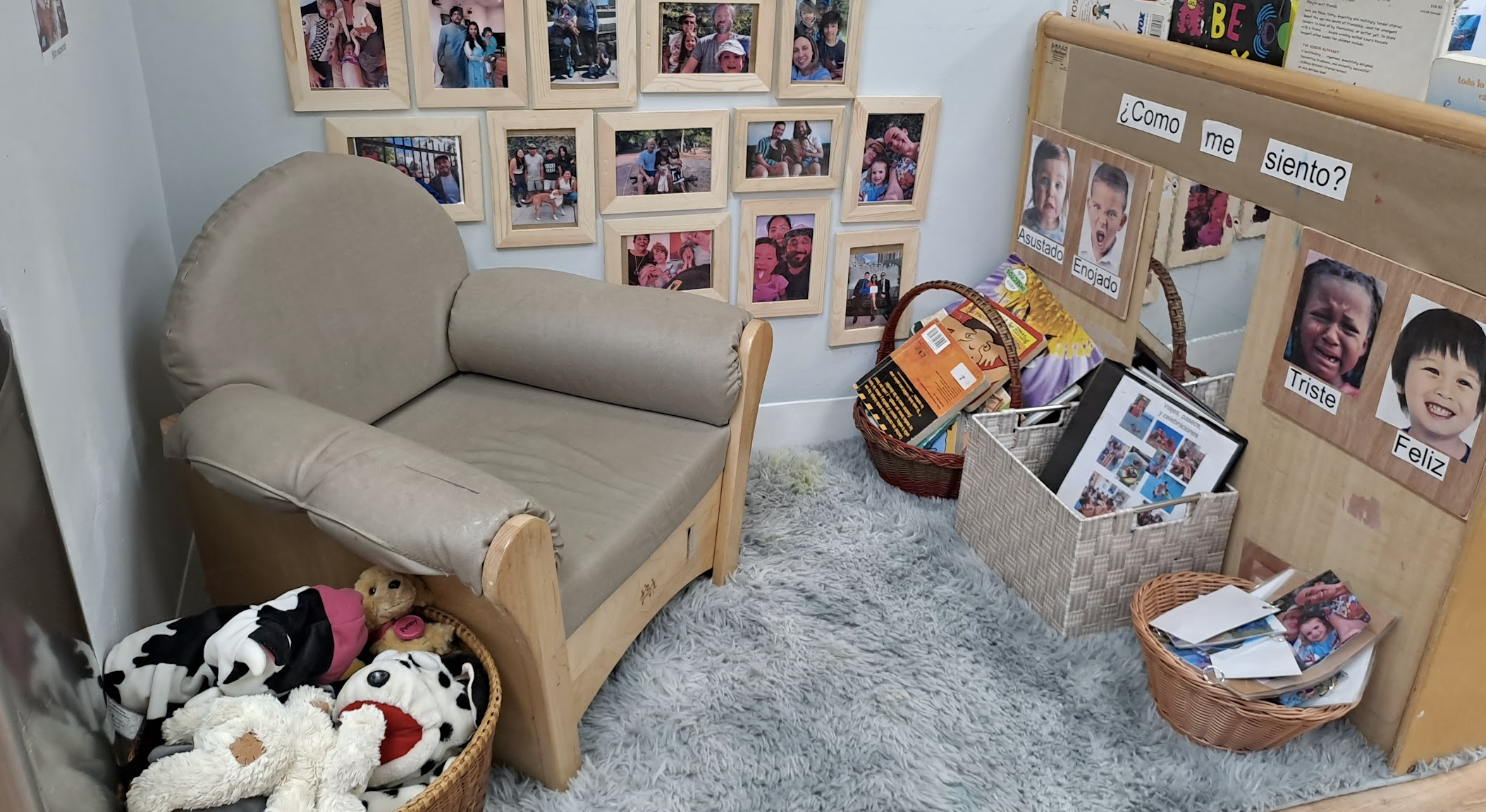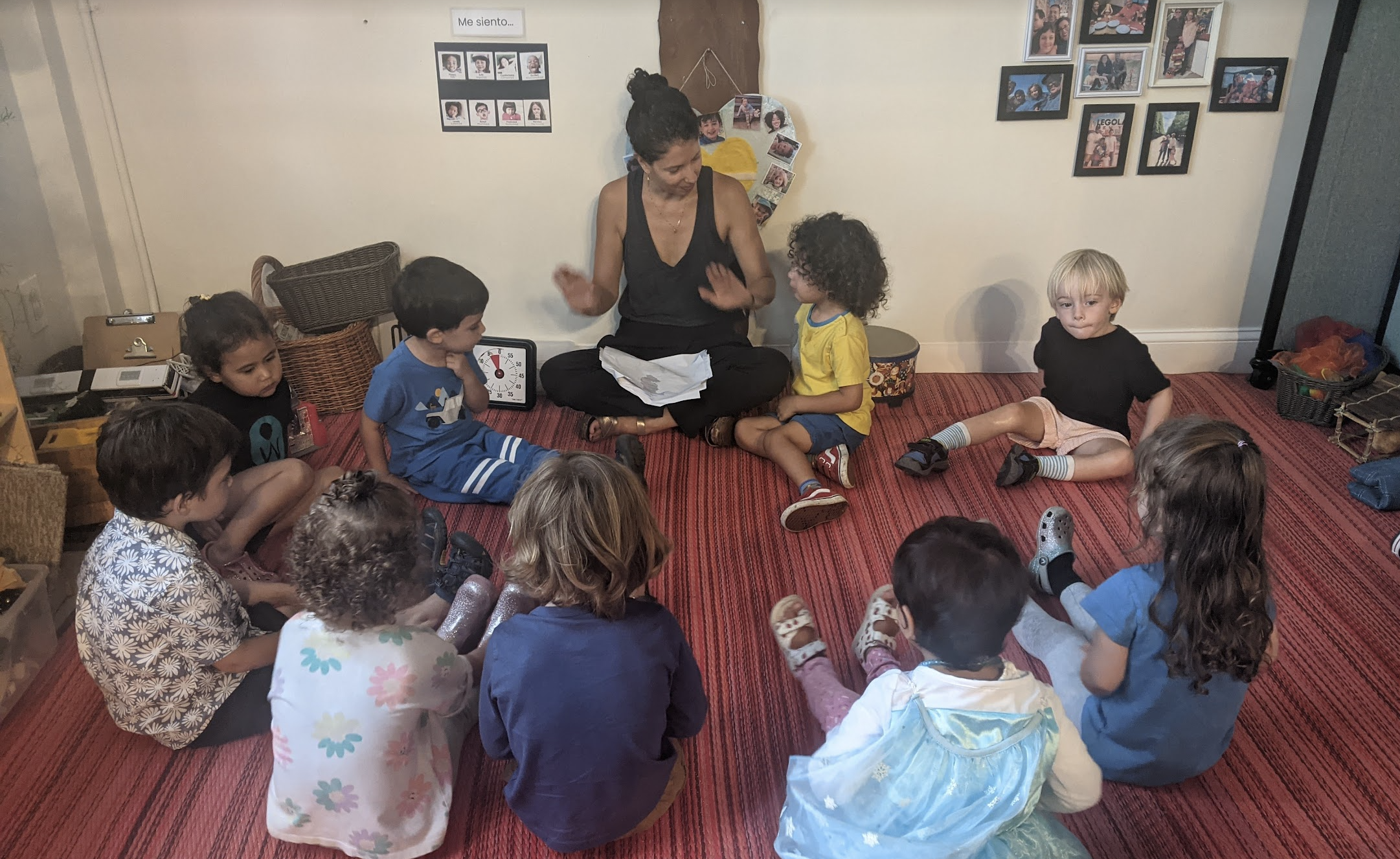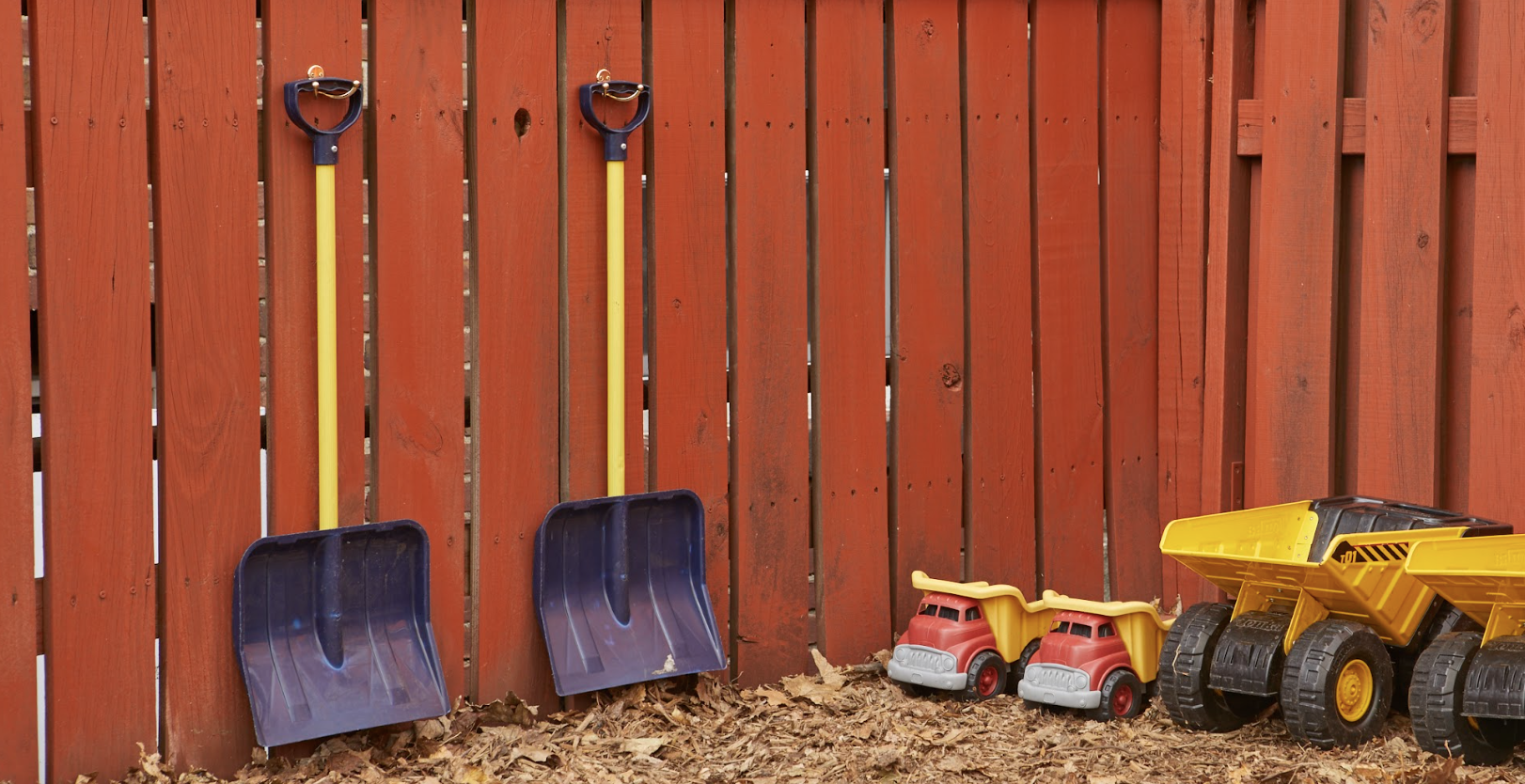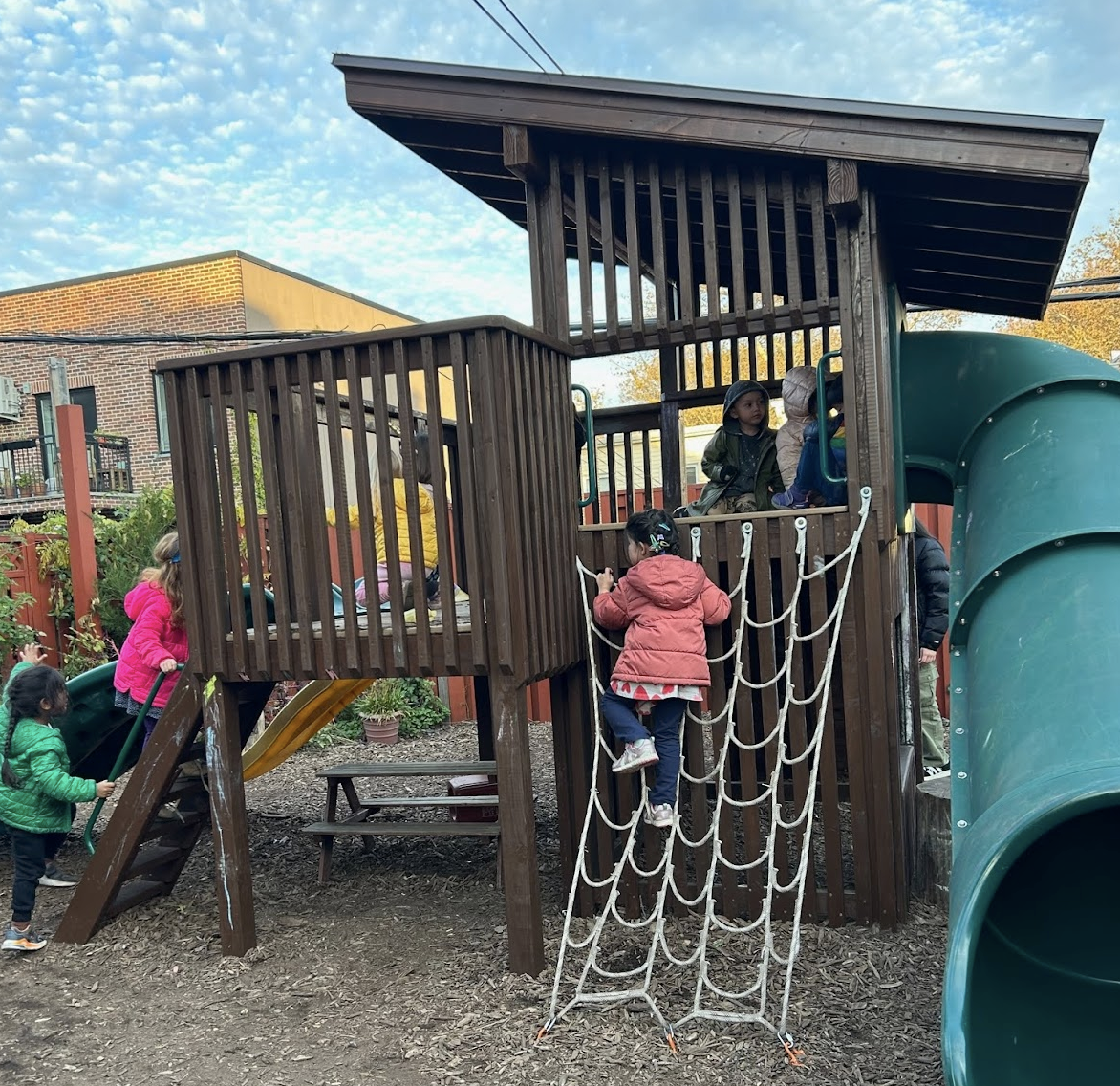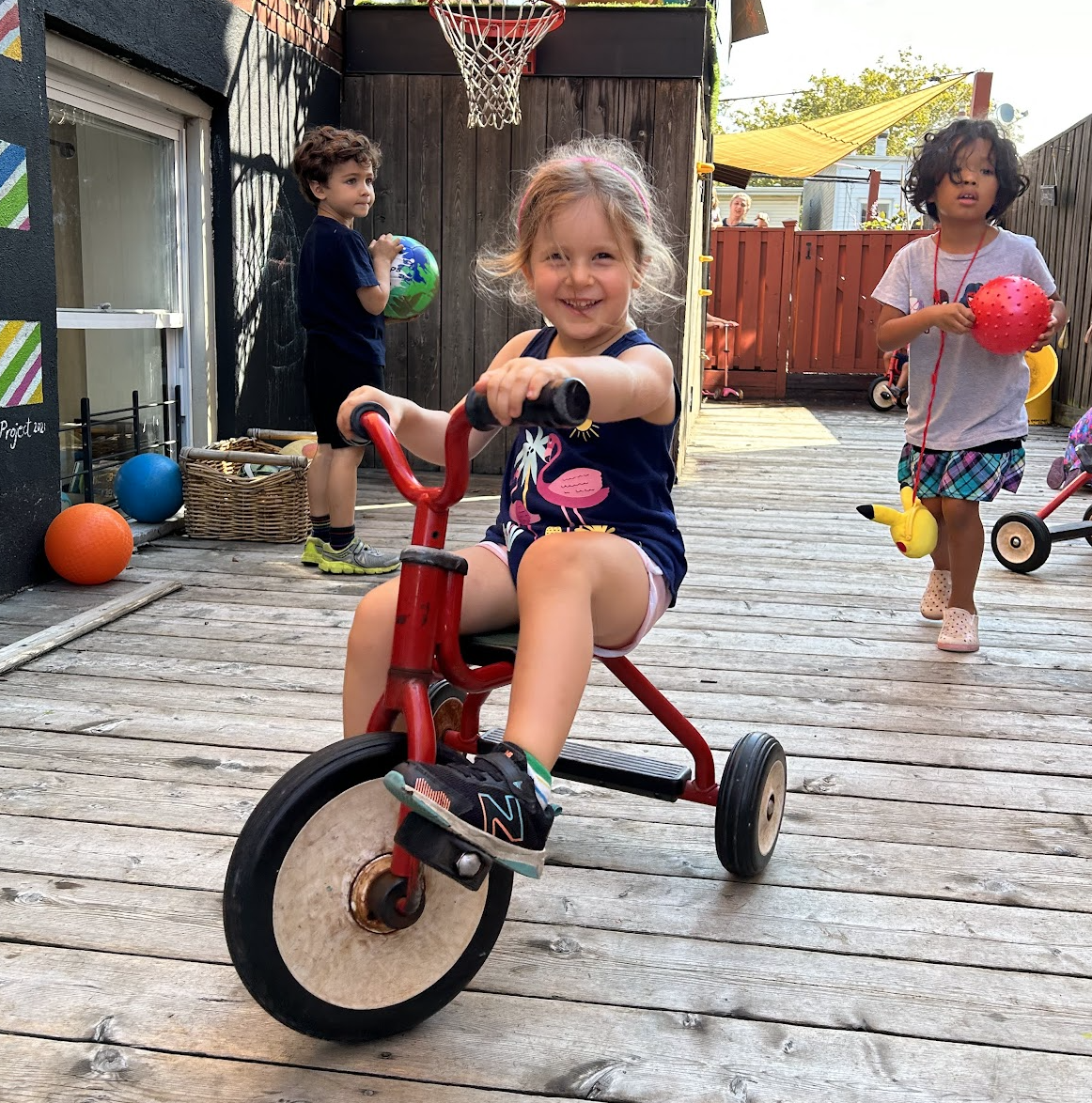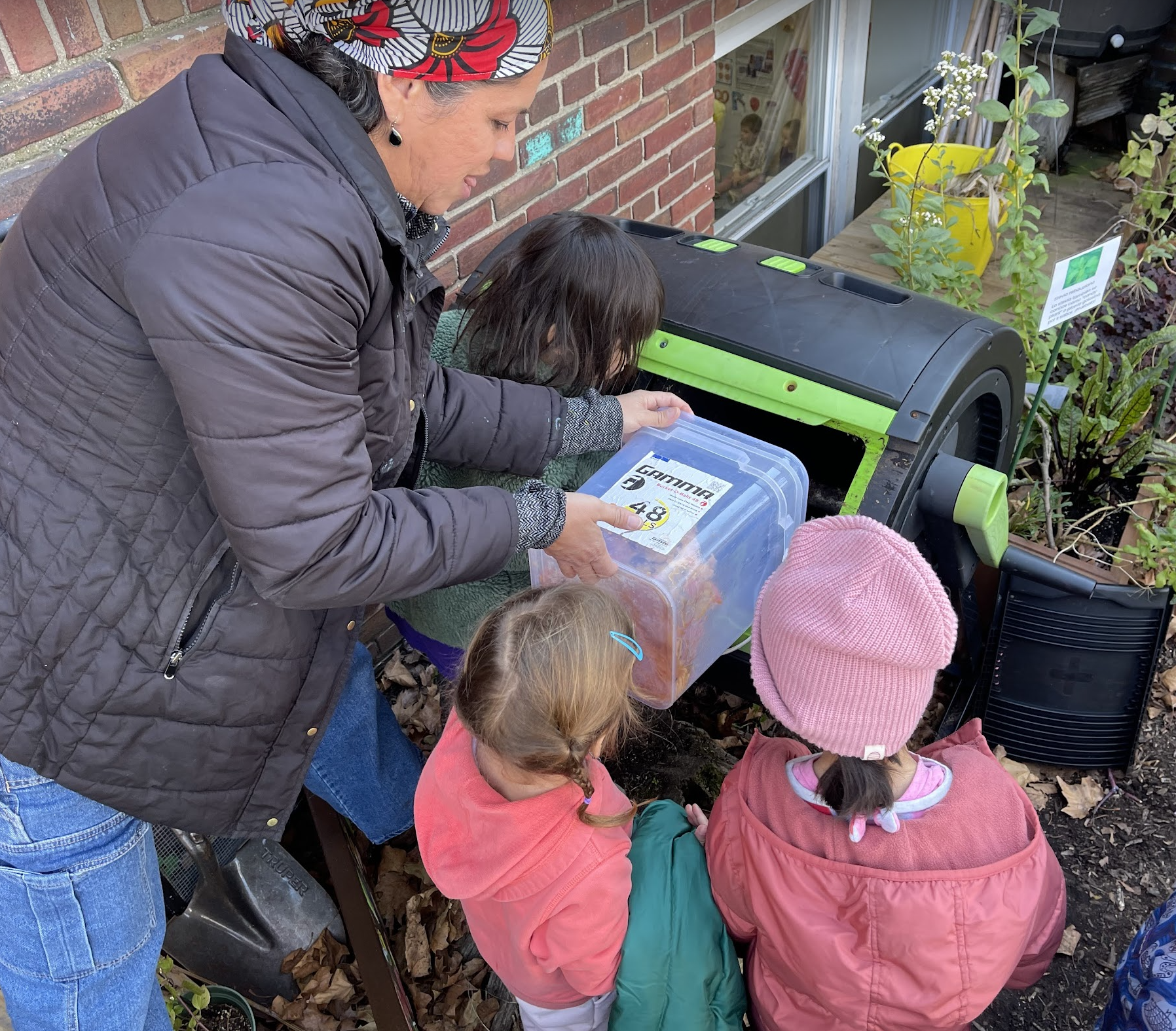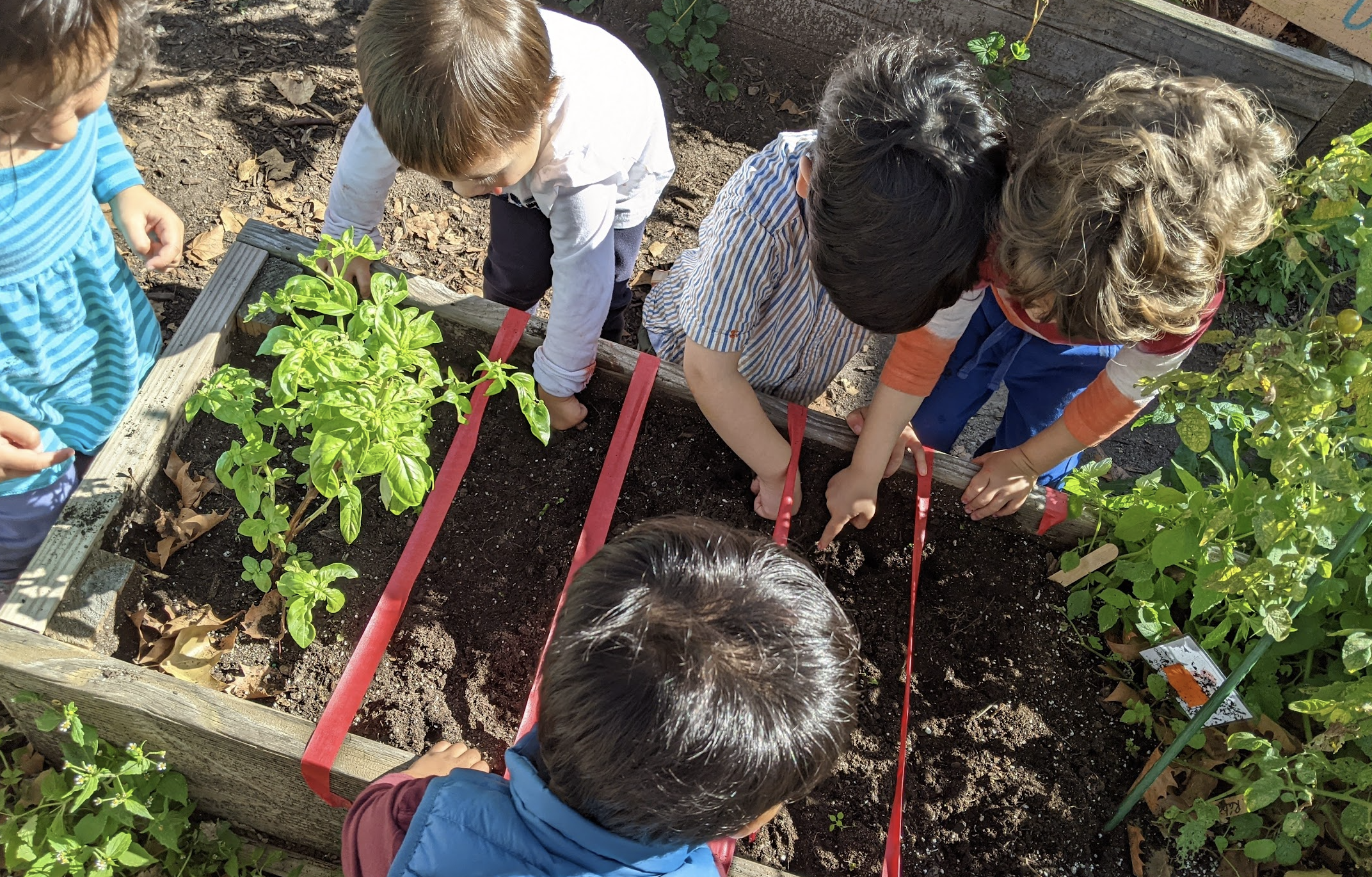Our Learning Environments
Our LEARNING ENVIRONMENT
Our learning environment reflects our mission and values.
Every space at OWP is a place for growth and learning, for exploration and discovery. Both our indoor and outdoor learning environments have multiple areas dedicated to different facets of learning, and children are encouraged to spend time exploring all of them.
Inside Classrooms
Library
Each classroom has a diverse and exciting library, filled with books in Spanish or translated to Spanish from all over the world. We build our library with careful consideration of children’s interests, as well as a strong commitment to representation and anti-bias. We believe that it is critical for children to see themselves represented in a positive and caring light, as well as to broaden their worldview and celebrate the differences between us. This “Mirrors and Windows” approach is reflected by the wide range of books in every class that can both engage and challenge students at all ages, and by encouraging students to seek out stories that are meaningful and rewarding for them.
Comfort Place ~ La Silla Especial
Sometimes a child is feeling sad or overwhelmed, and it is important to have access to calming spaces that can help us regulate emotions, and work through our feelings. Each classroom has a Silla Especial (special chair), that can serve as a relaxing and healing space when students are dealing with big feelings. Crucially, this is not a punishment or disciplinary method: nobody is ever sent to the Silla Especial for any reason. Instead, it is always open as an option should students choose to use it, and we work hard to make it a place of comfort and support. There are pictures of each student’s family and caregivers surrounding the chair, as well as a basket of beloved stuffed animals and soothing activities. We want to support children in communicating their feelings freely and without fear, and help them find the support they need to work through them.
Art Area
Each classroom also has a dedicated area for creating art, with a wide variety of materials on offer. We focus deeply and passionately on the artistic process – the feeling of the materials in our hands, the infinite possibility of an empty canvas, the joy of collaborating with friends — and far less on the final product or result.
We want students to develop an appreciation for the creative process, to believe strongly in their choices, and to make art for its own sake rather than relying on the external validation of a teacher or adult. Children learn that their curiosities and artistic decisions are worth pursuing, and are given the resources to create with materials that inspire them. We engage children in conversation about their process and artistic goals. Sometimes we learn about the life and work of a particular artist to spark our imagination. Several of the artists we have studied include Vero Rivera, Roberto Lugo, Amaia Marzabal (OWP teacher), Jadé Fadojutimi, Guadadlupe Maravilla, Cecilia Paredes, Keith Haring, Frida Kahlo, and Jean-Michel Basquiat.
Gathering Area
The Gathering Area is home to our classroom tree. Each tree has a heart in its center which holds our guiding principles (la escuela es un lugar segura, para sentirse bien, y para crecer), and photos of all the children and teachers in the classroom community. If anyone is absent, we place their photo in the center of the heart and sing our “Te Deseamos Lo Mejor” song. There is always a big and inviting rug in our gathering area, so that circle time and whole-class conversations and story times are comfortable.
Writing Center
Our youngest classrooms often do not have a dedicated writing center, but many of our pre-K classrooms have a space that invites children to explore and experiment with different kinds of writing. A wide array of materials and resources – various types of paper, pens, and pencils – allows students to try new things and to get a feel for the physical act of writing and drawing. This is not an exercise in rote memorization, nor a forced repetition of “correct” penmanship. Rather, the writing center is an open invitation for children to practice and develop both creativity and fine motor skills as they learn to make connections between sounds and letters in multiple languages.
Science, Discovery, and Garden
In addition to their time outside, students have a dedicated space in their indoor classroom to interrogate the world, craft experiments, and test their hypotheses. What kind of food does a slug eat? What happens when we mix different colors of paint? What is Play-Doh made of? Everybody – students and teachers alike – are encouraged to question deeply and enthusiastically, and we all discover new things each day. This is a space for cooking, for trying new things, and for expanding our worldview through experimentation and play. Some classes have small pets while others do chemistry, but there is no one-size-fits-all approach: each classroom makes this space their own, and uses children’s interests to develop unique and complex processes of research and discovery.
Dramatic Play Center
Young children are naturally curious and inventive, making games and stories out of whatever materials they have access to. In our Dramatic Play Center, we provide a multitude of resources and options for imaginative play and experimentation. Things like wooden blocks, kitchen supplies, and action figures are some of the ways that students are invited to use their imagination and collaborate with friends on games and scenarios both familiar and entirely new. These experiences encourage both group and individual creativity, and help reinforce ideas about taking turns and being generous with the toys and tools we have for those around us. Classrooms transform dramatic play centers regularly to reflect the thematic unit of study. We’ve had airplanes, farmers markets, photo studios, food trucks, the Fort Hamilton subway station, pet salons and plenty more.
Outside Classrooms
La Entrada ~ The Front Entrance
At the entrance to school, children are greeted with a variety of options for play and discovery, and to socialize with friends. With our rock garden, casita, and handicap accessible ramp, we let children know that learning starts from the time they arrive, in a comforting yet inviting space, with toys and activities they know and love.
The Mulch
Our newly designed playground and mulch area was thoughtfully created to provide safe, yet challenging obstacles for children to develop physical awareness and take risks in a supportive environment. A variety of slides, rope ladders, and tunnels are not simply a break from indoor learning; rather, this space offers a crucial opportunity for children to expand their sense of self-confidence and independence. They learn and invent new games to play with peers and teachers, fostering collaboration, creativity, and compromise.
La Pista ~ Deck
Our back deck and play area provides a chance for students to safely develop gross motor skills (run, jump, climb, crawl, balance, drag, pedal) and at the same time provides areas and materials that invite children to have a quiet moment, gathering with friends over a book or pretend play with large wooden blocks. . Children have time for free-play and self-directed exploration, working together to create castles, airplanes, and garbage trucks with tricycles, as well as more big blocks and boxes. Our deconstructed piano also plays a prominent role in our pista.
At the height of COVID 19, we added our Sí Se Puede mural. Each class designed a letter using a unique art technique. It remains today, and serves as a reminder of what we can do when we come together.
La Huerta ~ The Vegetable Garden
Students truly are the stewards of our environment, and of our school garden. Our bountiful garden and compost area allows students to use all of their senses in understanding how plants grow and change. Being in nature is a chance for children to get their hands dirty, to try things and make mistakes, to discover new ways of doing things, and develop their relationship with the natural world.
During our time in the vegetable garden, students have the opportunity to plant a variety of seeds and watch them grow, learning also about all the local wildlife that comes to visit. We use herbs and vegetables to cook with, and practice gratitude for all that the natural world has to offer us. Ultimately, we help each student create a relationship with nature based on care, admiration, and mutual respect.
El Arenero ~ The Sandbox
This area includes an array of other dramatic play and sensory experiences, including music panels, a sandbox, and our “Mud Kitchen,” which allows children to explore the different qualities of water and soil in imaginative play.
Our big sandbox and Mud Kitchen in particular offer valuable opportunities for children to develop spatial awareness, internalize mathematical relationships, and enjoy the process of creating with different materials. Children have the chance to ask questions and test hypotheses: How much does sand weigh? What happens when we add water? What does mud feel like between our fingers and toes?
These kinds of sensory experiences give children a space to engage in self-directed play, strengthening their understanding of concepts ranging from measurements in cooking to the fundamentals of barter and trade. In this area, students become chefs and architects, designers and engineers, and allow their unfettered imaginations to guide discovery and learning.


